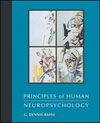 |
1 |  | 
Which of the following actions is a rapid and inflexible response to environmental stimuli? |
|  | A) | Voluntary movement. |
|  | B) | Reflex. |
|  | C) | Purposive movement. |
|  | D) | Habit. |
 |
 |
2 |  | 
What physiologist called the motor neuron stimulation of muscles, "the final common pathway"? |
|  | A) | Maurice Ravel. |
|  | B) | Charles Sherrington. |
|  | C) | Wilder Penfield. |
|  | D) | Edward Evarts. |
 |
 |
3 |  | 
What is the hierarchical order (lowest to highest) of the levels of regulation of movement? |
|  | A) | Tactics, execution, strategy. |
|  | B) | Strategy, tactics, execution |
|  | C) | Execution, tactics, strategy. |
|  | D) | Strategy, execution, tactics. |
 |
 |
4 |  | 
Which of the following movement disorders is paralysis of the lower limbs? |
|  | A) | Paraplegia. |
|  | B) | Poliomyelitis. |
|  | C) | Myasthenia gravis. |
|  | D) | Quadriplegia. |
 |
 |
5 |  | 
Which of the following does NOT have direct involvement in voluntary movement? |
|  | A) | M1. |
|  | B) | Parietal lobes. |
|  | C) | SMA. |
|  | D) | Limbic lobe. |
 |
 |
6 |  | 
What area mediates the cortical-cortical loop involved in voluntary movement? |
|  | A) | Basal ganglia. |
|  | B) | M1. |
|  | C) | Cerebellum. |
|  | D) | PMA. |
 |
 |
7 |  | 
What area serves as a comparator of motor command to motor output? |
|  | A) | Basal ganglia. |
|  | B) | M1. |
|  | C) | Cerebellum. |
|  | D) | PMA. |
 |
 |
8 |  | 
M1 is located in the |
|  | A) | postcentral gyrus. |
|  | B) | prefrontal cortex. |
|  | C) | precentral gyrus. |
|  | D) | parietal cortex. |
 |
 |
9 |  | 
Who demonstrated the topographical organization of M1 in humans using stimulation? |
|  | A) | Wilder Penfield. |
|  | B) | Apostolos Georgopoulos. |
|  | C) | Charles Sherrington. |
|  | D) | Edward Evarts. |
 |
 |
10 |  | 
M1 neurons do NOT code for |
|  | A) | force. |
|  | B) | individual muscles. |
|  | C) | direction. |
|  | D) | a group of muscles. |
 |
 |
11 |  | 
Who discovered the population vector predicting direction of movement in monkeys? |
|  | A) | Wilder Penfield. |
|  | B) | Apostolos Georgopoulos. |
|  | C) | Charles Sherrington. |
|  | D) | Edward Evarts. |
 |
 |
12 |  | 
In an individual with severe weakness and loss of fine-motor coordination, a lesion would be located in the |
|  | A) | cerebellum. |
|  | B) | SMA. |
|  | C) | PMA. |
|  | D) | M1. |
 |
 |
13 |  | 
Which of the following is NOT a symptom of a lesion to the cerebellum? |
|  | A) | Unilateral paralysis. |
|  | B) | Disturbance of limb-eye coordination. |
|  | C) | Impaired balance. |
|  | D) | Decreased muscle tone. |
 |
 |
14 |  | 
The caudate and the putamen are collectively known as |
|  | A) | globus pallidus. |
|  | B) | substantia nigra. |
|  | C) | external segment. |
|  | D) | neostriatum. |
 |
 |
15 |  | 
Which neurotransmitter is associated with Parkinson's disease? |
|  | A) | Serotonin. |
|  | B) | Norepinephrine. |
|  | C) | Dopamine. |
|  | D) | Epinephrine. |
 |
 |
16 |  | 
Which disorder of the basal ganglia includes chorea? |
|  | A) | Hemiballism. |
|  | B) | Huntington's disease. |
|  | C) | Ballism. |
|  | D) | Parkinson's disease. |
 |
 |
17 |  | 
Who coined the term apraxia? |
|  | A) | Hughlings-Jackson. |
|  | B) | Steinthal. |
|  | C) | Freud. |
|  | D) | Liepmann. |
 |
 |
18 |  | 
What cortical area is specialized for the mediation of voluntary movement as disrupted by apraxia? |
|  | A) | Right hemisphere. |
|  | B) | Basal ganglia. |
|  | C) | Cerebellum. |
|  | D) | Left hemisphere. |
 |
 |
19 |  | 
John can stand at attention, but he can't salute. What disorder does he have? |
|  | A) | Oral apraxia. |
|  | B) | Limb apraxia. |
|  | C) | Motor apraxia. |
|  | D) | Ideational apraxia. |
 |
 |
20 |  | 
Where did Heilman and Rothi propose praxicons are represented in the brain? |
|  | A) | Right parietal lobe. |
|  | B) | Basal ganglia. |
|  | C) | Prefrontal cortex. |
|  | D) | Left parietal lobe. |
 |



 2002 McGraw-Hill Higher Education
2002 McGraw-Hill Higher Education